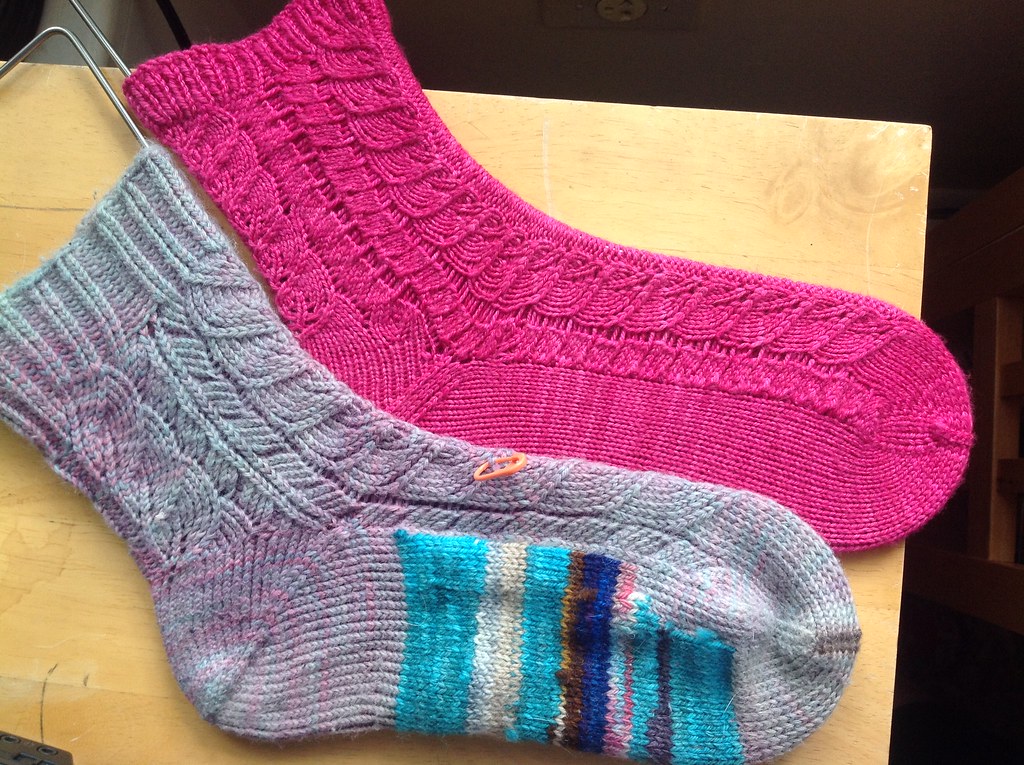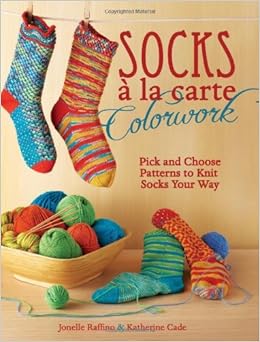Yesterday I got a welcome package in the mail from Three Irish Girls: a pair of handknit socks. Now, these weren’t just any two pairs of socks. This pair of socks were the samples made for Three Irish Girls’ back in the day when I designed Totoro and Isis wings for them – two of the very first patterns I ever designed for them. Seeing these two pairs of socks was like meeting old friends you didn’t know you had – both these samples were made by hired knitters, and sent straight to TIG headquarters.
Meanwhile, since I was new to the designing, I also created my own pairs of the socks, testing out the idea before I wrote it into a pattern.
I thought it would be interesting to compare the two samples side-by-side.

Isis Wings: Old Pair on Bottom, New (to me) pair on Top
Here you see Isis Wings, in both variations. First, note my pair, worn with many washings and faded to grey from a sit in the sun. There’s a stitch I noticed I need to mend marked by a stitch marker; the bottom is more darn than original sock. The yarn I made my sample for was a little larger than the final yarn used for Isis Wings – the motif on mine ends up looking more open and bold. For the final Isis wings I decided to set the heel decreases in a little, and I created a little bit of rounder toe. The ribbing for the cuff on the final version is shorter, and I did something simpler and less distinctive than the 2×2 ribbing on my sample. You might notice that one of my Isis Wings socks is taller than the other: I’ve mentioned before how I forgot a repeat on one of my socks.

Totoro; Old Pattern on Top, New Pattern on Bottom.
On Totoro the differences are a little more subtle. The patterning with the slipped stitch V is the same; I changed the heel from a riverbed heel to a short row heel. At the time, I couldn’t figure out how to write a Riverbed heel and grade it the way I wanted. I added more repeats to the top on the final version. Again, I couldn’t figure out how to wrap the pattern around the leg and grade it for different sizes, so the cuff of the sock has a column of missing V’s up each side. If I were to go back, I’d either re-grade the pattern, or add some other feature up the leg on the side so it doesn’t look so empty.










